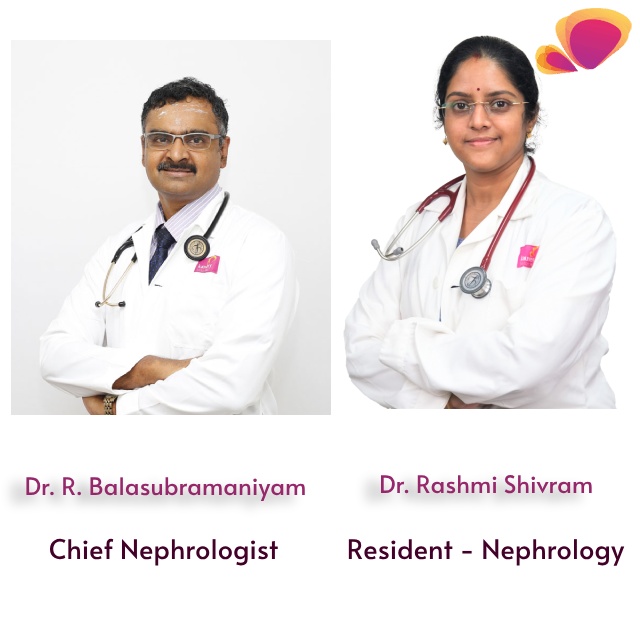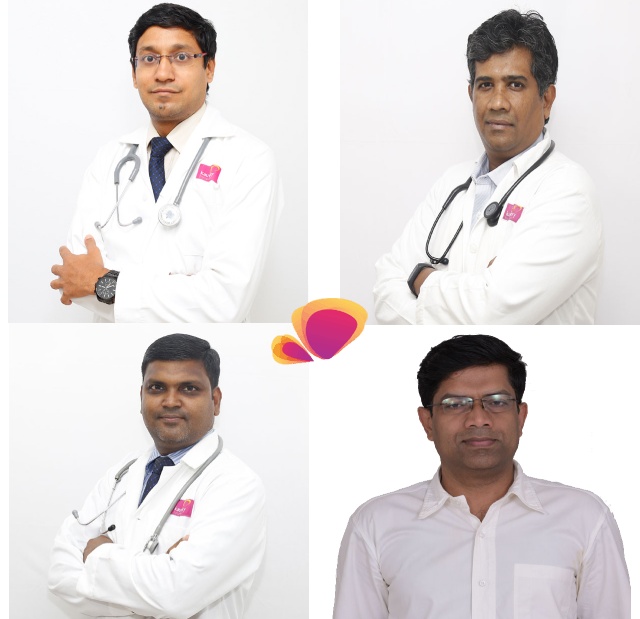Message from Team IMA Chennai Kauvery Alwarpet Branch

Dear colleagues
Chennai Kauvery Alwarpet IMA welcome’s you to the September edition.
Emergency situations are life threatening and needs team support to make appropriate clinical diagnosis in the critical moments.
A few challenging Emergency cases are discussed in this edition which also conveys the importance of team support in a medical evaluation and success of a treatment.
We thank all specialities who have contributed to making this edition which can be an eye opener for many budding physicians.
Kauvery hospitals has the expertise Emergency team and specialists round the clock.
Long Live IMA.
Yours in IMA service,
Dr S Sivaram Kannan
President

Right emergency treatment transforms the life of patients and on many occasions, this intervention will give them the second chance.
This month’s issue discusses such perfect interventions and positive outcomes.
Long live IMA.
Yours in IMA service,
Dr. Bhuvaneshwari Rajendran
Secretary

Dear Friends
Happy to present the IMA journal for the month of September 2023.
Kauvery Main Hospital provides high end emergency and acute care across specialities.
This is possible by the great teamwork starting from Emergency department, intensive care units supported by every department.
This edition of the journal focuses on emergencies.
We are thankful to the editorial and branding teams.
With regards
Dr. R. Balasubramaniyam
Editor

Temporary Heal Can Possibly Kill!
Abstract
Eucalyptus oil is a traditional herbal medicine widely used for a number of common ailments. Extreme toxicity following ingestion is well-documented, but public awareness is generally lacking. The toxic symptoms are rapid in onset, which include a burning sensation in the mouth and throat, abdominal pain, and spontaneous vomiting. The initial central nervous system (CNS) effects are giddiness, ataxia, and disorientation followed by loss of consciousness and convulsions occurring within 30 mins.

Intracranial Hemorrhage During Dialysis – An Emergency
Case History
Mr. XYZ, a 22-year-old gentleman, was on maintenance hemodialysis due to CKD. He was planned for a live related renal transplant on 31/8/2023. He was also a known hypertensive on regular medications, which were optimized recently. During routine dialysis on 28/8/2023, his BP was found to be 210/90mmHg, for which he was given sublingual nifedipine. Subsequently he developed headache along with drowsiness and slurred speech. His blood pressure was around 220/100mmHg in spite of the anti-hypertensive medications. He was shifted to the ER and labetalol infusion was started. CT brain was done, in view of his decreased responsiveness, which showed acute hemorrhage with surrounding edema in the right gangliocapsular and frontal regions with intraventricular extension in bilateral lateral and third ventricles with mass effacement and mild midline shift to left.
Read Full Article

Managing a Critically Ill High Risk Pulmonary Embolism
Introduction
A high-risk pulmonary embolism (PE) is a life-threatening medical emergency characterized by the sudden obstruction of one of the major or more pulmonary arteries by acute thrombus or by a large embolus, leading to persistent cardiogenic shock, hypoxia and respiratory failure. It requires a rapid and effective management strategy to improve patient outcomes and reduce mortality rates. In this case report, we highlight the challenges and strategies involved in managing a patient with massive pulmonary embolism with cardiogenic shock.
Case Report
A 48yr old male with no previous past medical history presented to the Emergency room with sudden onset
Read Full Article

Case Report – Adnexal Cyst Torsion In The Adolescent
Introduction
Adnexal torsion is a common gynaecologic surgical emergency which needs prompt diagnosis though challenging based on clinical symptoms and imaging techniques (Doppler USG and MRI), it also warrants timely surgical intervention to preserve ovarian function and future fertility. We present the case report of ovarian cyst torsion in an adolescent were early diagnosis and immediate surgical intervention had saved the adnexa from irreversible damage preserving her ovarian function and future fertility.
Case Report
A 17 year old girl had reported to emergency room with complaints of sudden onset of severe lower abdominal
Read Full Article

A Link between the Eye & the Brain – An Interesting Case Report
Abstract :
We report a case of a young female who presented to emergency department with rapidly developing visual deficits in the form of hemianopia. Her NIHSS score was 2/42. She was thrombolysed with tenecteplase and she showed good improvement in her neurological symptoms. Thrombolysis in very low NIHSS Score (0/1) is associated with increased risk of bleed and lower rate of excellent outcome. Thrombolysis in low NIHSS score (2-5) is associated with early neurological deterioration but with excellent outcome at 3 months. This patient is presented for the excellent neurological outcome she had because of thrombolysis, though her NIHSS score was low.
Read Full Article

Airway Management Of An Elderly Patient With Stridor
An elderly patient Mr A, 80 yrs, presented to emergency with severe stridor. He has been recently diagnosed to have supraglottic growth and he was awaiting a Direct laryngoscope and biopsy for the same by ENT surgeons.
On arrival to emergency, he had a room air saturation of 80% and with O2 around 90%. His higher functions, heart rate & blood pressure were stable. He had no other significant systemic illness.
An emergency surgical tracheostomy and a DL scopy with biopsy following it was planned. The patient was wheeled into Operating room immediately. After a brief discussion with ENT surgeons, it has been decided to try for an awake intubation to secure airway for oxygenation and ventilation.
Read Full Article

Eus Cystogastrostomy for Large Symptomatic Pseudocyst
Mr.H a 20 years old male presented to the ER with the history of sudden onset of severe abdominal pain, multiple episodes of vomiting for about 3 days with decreased oral intake and fatigue. Patient was taken to a nearby hospital and diagnosed as Acute Pancreatitis and thence was shifted here for further management. Evaluation at Kauvery hospital, Chennai revealed raised serum lipase, and ongoing pancreatic type abdominal pain at that point (WBC:- 17800, Se.Amylase:- 1130, Se.Lipase:- 1992 and elevated CRP around 250, LDH Levels) CECT Abdomen revealed necrotising Pancreatitis with 40% of pancreatic necrosis and acute fluid collection in the peripancreatic region of size approximately 8cm, Moderate ascites & Bilateral mild pleural effusion, There was no history of alcoholism, abdominal trauma, substance abuse and no evidence of gallstones in the imaging and also the Serum Triglycerides, Serum Calcium and Se.IgG4 were all normal.


